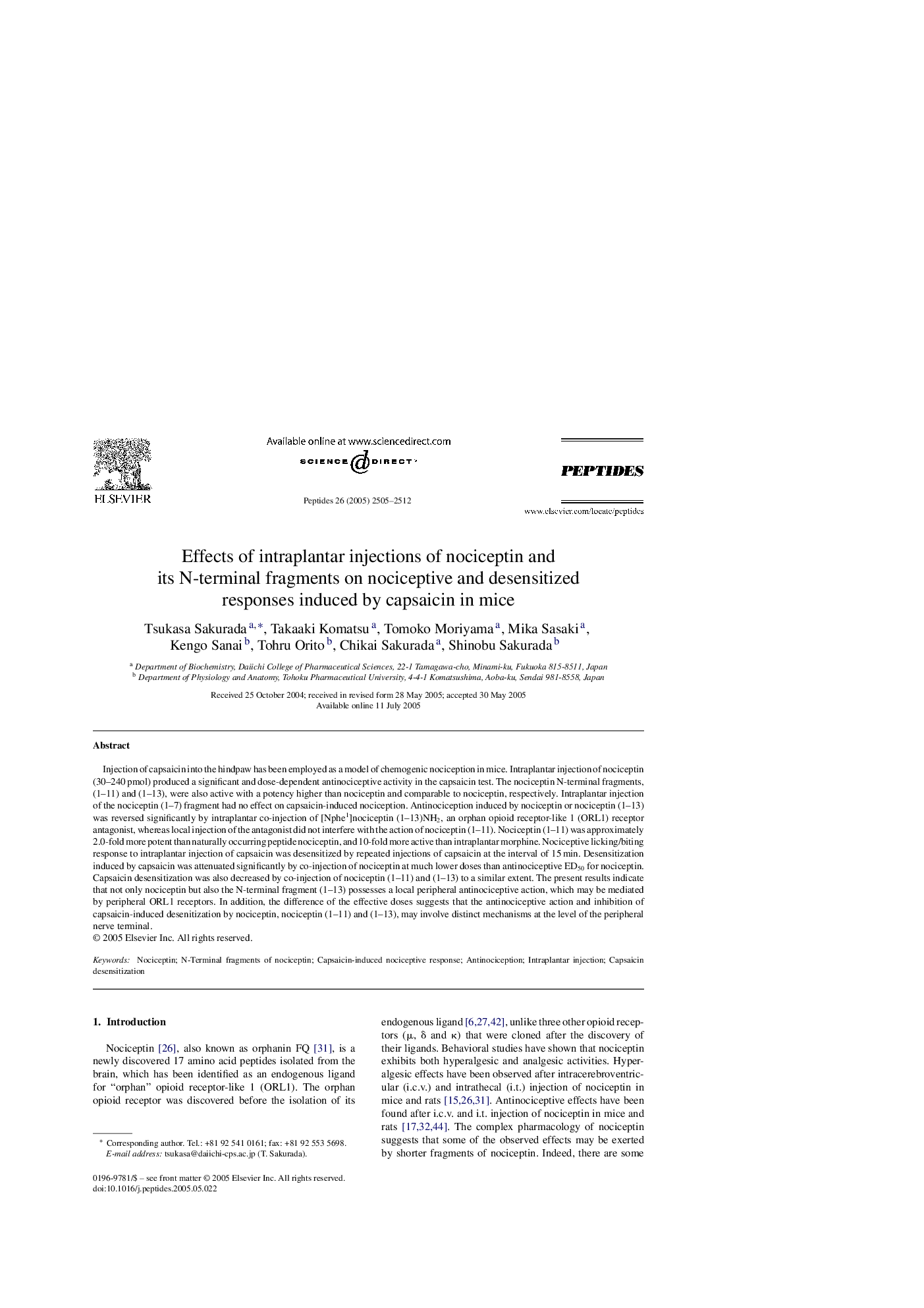| کد مقاله | کد نشریه | سال انتشار | مقاله انگلیسی | نسخه تمام متن |
|---|---|---|---|---|
| 2008697 | 1066439 | 2005 | 8 صفحه PDF | دانلود رایگان |

Injection of capsaicin into the hindpaw has been employed as a model of chemogenic nociception in mice. Intraplantar injection of nociceptin (30–240 pmol) produced a significant and dose-dependent antinociceptive activity in the capsaicin test. The nociceptin N-terminal fragments, (1–11) and (1–13), were also active with a potency higher than nociceptin and comparable to nociceptin, respectively. Intraplantar injection of the nociceptin (1–7) fragment had no effect on capsaicin-induced nociception. Antinociception induced by nociceptin or nociceptin (1–13) was reversed significantly by intraplantar co-injection of [Nphe1]nociceptin (1–13)NH2, an orphan opioid receptor-like 1 (ORL1) receptor antagonist, whereas local injection of the antagonist did not interfere with the action of nociceptin (1–11). Nociceptin (1–11) was approximately 2.0-fold more potent than naturally occurring peptide nociceptin, and 10-fold more active than intraplantar morphine. Nociceptive licking/biting response to intraplantar injection of capsaicin was desensitized by repeated injections of capsaicin at the interval of 15 min. Desensitization induced by capsaicin was attenuated significantly by co-injection of nociceptin at much lower doses than antinociceptive ED50 for nociceptin. Capsaicin desensitization was also decreased by co-injection of nociceptin (1–11) and (1–13) to a similar extent. The present results indicate that not only nociceptin but also the N-terminal fragment (1–13) possesses a local peripheral antinociceptive action, which may be mediated by peripheral ORL1 receptors. In addition, the difference of the effective doses suggests that the antinociceptive action and inhibition of capsaicin-induced desenitization by nociceptin, nociceptin (1–11) and (1–13), may involve distinct mechanisms at the level of the peripheral nerve terminal.
Journal: Peptides - Volume 26, Issue 12, December 2005, Pages 2505–2512